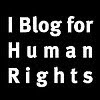
The Department of Health (DOH) said the rise in the number of Human Immunodeficiency virus (HIV) cases among Filipino adolescents could become "tomorrow's epidemic."
On Wednesday, during the United Nation Children's Fund (UNICEF) presentation of the "State of the World's Children," DOH National Epidemiology Center director Dr. Eric Tayag said that in 2010, one out of three HIV patients is from the 15-24 year old bracket.
The number of Filipino adolescents who are HIV-positive increased drastically in the last four years, from 44 cases in 2006 to 484 in 2010.
Patients who contract HIV before they are 24 years old will most likely develop Acquired Immune Deficiency syndrome (AIDS) before the age of 40, Tayag said.
Thus, the continuous rise in the number of HIV-positive adolescents will translate into an increase in the number of AIDS patients in the country, he added.
According to the UNICEF report, the Philippines is one of only seven countries where HIV cases increased by more than 25 percent from 2001 to 2009.
The other six countries are Armenia, Bangladesh, Georgia, Kazakhstan, Kyrgyzstan and Tajikistan.
A total of 6,015 HIV cases have been reported in the country from 1984 to 2010.
The highest number of new HIV cases was recorded in 2010, where 1,591 new cases were reported.
HIV/AIDS in PHL has an 'adolescent face'
UNICEF's "State of the World's Children" report for 2011 focused on adolescents, who make up almost one-fifth of the world's population.
UNICEF data showed that more than half of the world's adolescents, or about 330 million, are in Asia.
In the Philippines, there are about 20 million people between the ages 15 and 24.
UNICEF country representative Vanessa Tobin said there is no doubt that HIV/AIDS in the Philippines has "an adolescent face."
"We know from research and findings around the world that youth need sound and accurate information on sexual and reproductive health to protect them from teen pregnancy, risky sexual behavior, STIs (sexually transmitted infection) and HIV," she said.
"We cannot be complacent anymore about the rate of new HIV infections among adolescents," she added.
The DOH also said the youth have a higher risk of acquiring HIV because of:
substantial peer pressure for risk-taking;
the limited opportunities to learn about preventing HIV infection; and
the lack of skills to communicate their health needs.
Adolescents in the country also have very little or no access to sexual and reproductive health services, the DOH said.
Tobin said an effective way to educate young people about the risks of HIV and AIDS is to use a consistent message over a period of time and from different sources.
"It is important to get sources from health centers and their parents, but it is more likely they will listen to their friends," she said, adding that information from peers is okay as long as the information they are given correct information.
Preventing HIV
Tayag said the DOH is now concentrating their efforts on HIV risk groups, particularly the youth, to prevent the spread of HIV.
The DOH said it will continue to champion the ABCs of preventing HIV:
abstain
be faithful, and
use a condom.
However, he said they will focus on the promotion of condom use as a way to prevent HIV transmission, especially among the youth.
"Ayaw na namin magpaligoy-ligoy pa. Tapos na ang debate sa paggamit ng condom," he said."Sana malinawan ang lahat na ang HIV epidemic sa ating bansa ay maaring lumala pa sa mga susunod na taon."
(We don't want to beat around the bush anymore. The debate about condom use is settled. Everyone should know that the HIV epidemic in the country will get worse in the coming years.)
HIV risk groups
The DOH identified three risk groups from which a majority of the country's HIV patients come from:
men who have sex with men (MSM);
female sex workers, and
injecting drug users.
In the 15-24 age bracket, the most common mode of HIV transmission is in men who have sex with men (65 percent).
Profile of the risk groups
At the UNICEF press conference, the health department presented the profile of adolescents in the three identified risk groups.
Men who have sex with men (MSM):
Data showed that 80 percent of HIV cases are men, a majority of which are among men who have sex with men (MSM) between the ages 20 and 29.
Among HIV-positive MSMs, the mean age of their first sexual encounter with another man is 15 years old.
Only 24 percent have correct knowledge of HIV and HIV prevention.
In the past 12 months, 58 percent of adolescent MSMs had anal sex without using a condom, and only 20 percent used a condom during their last sexual activity with a man.
Data also showed that adolescent MSMs go through at least one or two sexual partners in a month.
Young females in prostitution:
On average, the adolescent females were 16 years old when they were first paid for sex.
Only 10 percent of sex workers aged 15-24 years old regularly bring a condom when they engage in sexual activities for money.
A female sex worker will go through four to seven partners in a month.
Only 55 percent of the interviewed females used a condom during her last sexual activity with a customer.
Fifty-nine percent feel that their activities are putting them at risk for HIV, but only 5 percent have ever had an HIV test.
Injecting drug users:
Among adolescent injecting drug users, only 24 percent have a correct knowledge of HIV and HIV prevention.
Most were 16 years old when they first used injected drugs.
Almost 70 percent of injecting drug users shared syringe and needles during their last injection, and among those interviewed, no one ever had an HIV test.
Only 30 percent used a condom during their last sexual activity, and 52 percent also accept payments for sex.
– VVP, GMA News








































0 comments:
Post a Comment
Please drop me a line: